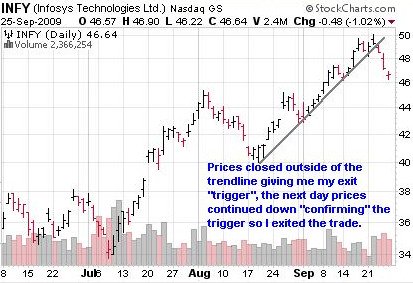Europe's AI Strategy Under Pressure From The Trump Administration

Table of Contents
Trade Disputes and Tariffs Hampering AI Development
The Trump administration's protectionist trade policies have significantly impacted Europe's ability to develop and deploy advanced AI systems. Tariffs and restrictions on crucial components and technologies are creating significant hurdles for European AI companies.
Impact on AI Hardware Imports
The imposition of tariffs on essential AI hardware components, such as semiconductors and advanced computing chips, has dramatically increased production costs for European companies. This makes them less competitive against companies in countries not subject to these tariffs.
- Increased production costs: Higher import costs translate directly into higher prices for European-made AI products, reducing their market competitiveness.
- Reduced access to cutting-edge technology: Tariffs can limit access to the latest, most powerful hardware, hindering innovation and slowing down the development of cutting-edge AI applications.
- Potential for supply chain disruptions: Reliance on US-made components leaves European AI companies vulnerable to supply chain disruptions caused by trade tensions and geopolitical instability.
Restrictions on AI-related Exports
Export controls and restrictions imposed by the US government on AI-related technologies further impede European AI development. This limits the flow of both hardware and software, as well as expert knowledge.
- Obstacles to collaborative research projects: Restrictions on the export of AI algorithms and software hamper international collaborative research efforts, slowing down progress across the board.
- Limitations on access to advanced algorithms and software: European researchers and companies may be denied access to crucial AI technologies developed in the US, impacting their ability to compete effectively.
- Increased bureaucratic hurdles for international AI collaborations: The complex regulatory environment surrounding AI exports creates significant bureaucratic hurdles for European companies seeking to collaborate with international partners.
Differing Approaches to Data Privacy and Regulation
A significant challenge stems from the contrasting approaches to data privacy and regulation between Europe and the US. Europe's stringent General Data Protection Regulation (GDPR) differs significantly from the more lenient US approach. This divergence creates significant obstacles for transatlantic data sharing and AI collaboration.
GDPR vs. US Data Practices
The GDPR's emphasis on data subject rights and stringent requirements for data processing creates a significant hurdle for transatlantic data flows. Multinational AI companies face complex compliance challenges, requiring different strategies for operations in Europe and the US.
- Data transfer difficulties: Transferring data between the EU and the US becomes complicated and expensive due to GDPR compliance requirements.
- Compliance complexities for multinational AI companies: Companies operating on both sides of the Atlantic must navigate two distinct regulatory frameworks, incurring significant compliance costs.
- Potential for legal disputes and regulatory uncertainty: The differences in regulatory approaches create potential for legal disputes and uncertainty for businesses operating across borders.
Impact on AI Research and Development
The differing data privacy regulations directly impact the availability of data for AI training and development. This limitation is particularly challenging for large-scale AI projects requiring massive datasets.
- Challenges in cross-border data sharing for AI training: The complexities of GDPR compliance hinder the pooling of data from European and US sources for AI model training.
- Limited access to large datasets for AI model development: Smaller datasets limit the accuracy and performance of AI models developed by European researchers and companies.
- Potential for slower progress in certain AI research areas: The lack of access to large, diverse datasets could slow progress in certain AI research areas, putting Europe at a disadvantage.
Geopolitical Competition and Security Concerns
Both the US and Europe recognize AI as a strategic asset crucial for national security and economic competitiveness. This recognition fuels geopolitical competition, making cooperation challenging.
AI as a Strategic Asset
The strategic importance of AI fuels a competitive dynamic, hindering cooperation between the US and Europe. Both sides see control over AI technology as vital for maintaining national security and economic leadership.
- Concerns over AI technology falling into the wrong hands: Both the US and Europe are concerned about the potential misuse of AI technologies, leading to restrictions on technology transfer.
- Competition for talent and resources in the AI field: Both countries are competing fiercely to attract and retain top AI talent and secure access to vital resources.
- Potential for AI to be weaponized: The potential for AI to be used for military applications increases the stakes of this geopolitical competition.
Security Concerns and AI Development
The Trump administration's focus on national security led to increased scrutiny of AI technologies with potential dual-use applications, impacting European AI research and development.
- Increased scrutiny of AI research projects: European research projects may face increased scrutiny and potential delays due to security concerns.
- Restrictions on access to specific AI technologies: European researchers and companies may be denied access to certain AI technologies due to national security concerns.
- Potential for hindering progress in crucial AI sectors (e.g., cybersecurity): Restrictions on AI technology could hinder progress in crucial sectors like cybersecurity, leaving Europe vulnerable.
Conclusion
Europe's AI strategy faces significant headwinds due to the pressures exerted by the Trump administration's policies. Trade disputes, differing regulatory approaches to data privacy, and geopolitical competition all create substantial challenges for European AI development. To navigate these complexities, Europe must prioritize several key strategies: fostering strong international partnerships outside the US, investing heavily in domestic AI talent and infrastructure, and upholding robust data protection regulations while finding ways to facilitate necessary data sharing for research and development. Ignoring these challenges risks undermining Europe's competitiveness in the global AI race. A proactive and strategic approach is essential for a successful and independent European AI strategy. It’s time for Europe to consolidate its position and effectively counter the pressures on its Europe AI strategy.

Featured Posts
-
 127 Years Of Brewing History Ends Anchor Brewing Company To Shut Down
Apr 26, 2025
127 Years Of Brewing History Ends Anchor Brewing Company To Shut Down
Apr 26, 2025 -
 Point72s Focused Emerging Markets Strategy Ends Traders Exit
Apr 26, 2025
Point72s Focused Emerging Markets Strategy Ends Traders Exit
Apr 26, 2025 -
 The Rise Of Chinese Automakers Are They Poised For Global Success
Apr 26, 2025
The Rise Of Chinese Automakers Are They Poised For Global Success
Apr 26, 2025 -
 Blockchain Analytics Leader Chainalysis Integrates Ai Through Alterya Acquisition
Apr 26, 2025
Blockchain Analytics Leader Chainalysis Integrates Ai Through Alterya Acquisition
Apr 26, 2025 -
 Green Bay Hosts The Nfl Drafts First Round What To Expect
Apr 26, 2025
Green Bay Hosts The Nfl Drafts First Round What To Expect
Apr 26, 2025
